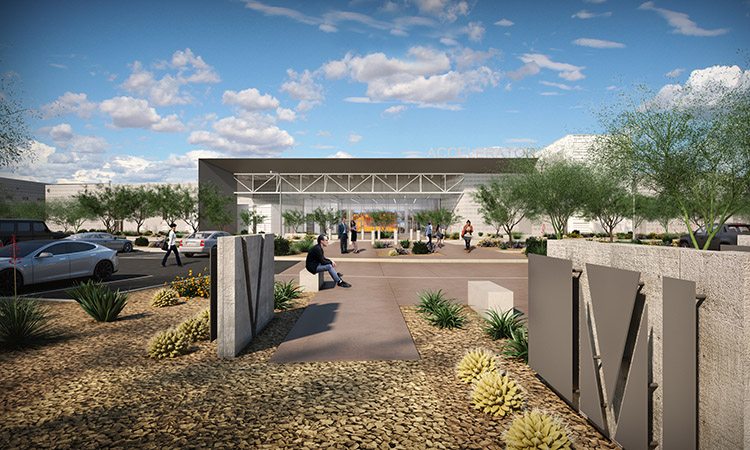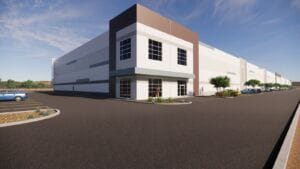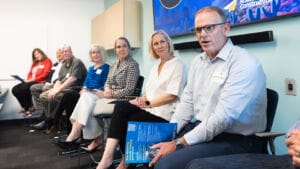An Arizona school district is set to get its first newly built high school in a decade in the form of a cutting-edge campus that will be the basis for research, while simultaneously providing a modern classroom setting for students.
The upcoming Canyon View High School will be made with a new heat-storing material. The installation of the technology, known as Bio-Phase Change Material, will serve as the basis of research on how to efficiently heat and cool a facility.
Canyon View High School will be built in Waddell, an unincorporated community in the Northwest part of the Greater Phoenix metropolitan area. The school will be part of the Agua Fria Union High School District (AFUHSD).
Canyon View is estimated to operate 78 percent more energy efficient than a traditional high school, says Premnath Sundharam, the global sustainability leader of DLR Architecture Group, which designed Canyon View.
The new building material that’s being incorporated on the campus will be part of an 80,000-square-foot area called the Agora. It will run the length of the school highlighting the space between the main two parts of the campus.

The research that will take place at Canyon View is called the Thermal Mass 2.0 project, and consists of DLR Group, the school district, Arizona State University, Chasse Building Team and Phase Change Energy Solutions.
The school district plans to develop curriculum modules that include the Thermal Mass 2.0 project for its environmental science classes.
While Canyon View will receive some of the latest cooling and heating technologies to keep the campus energy efficient, it will also have modern designs.
The designs will help enhance the learning experience, while also paying homage to the lush desert landscapes surrounding the high school’s site.
“(The school board and DLR) were always looking for those materials that were of Arizona, so when you look at the block and you look at the mountains beyond, it really looks like they’ve emerged from the land,” says Pamela Loeffelman, K-12 education leader architect for the DLR Group.

The high school is designed to have small discoveries around every corner. The columns will reflect trees. Masonry building patterns will be inspired by human DNA. The handrails, south side solar structure and seat bench patterns will all be inspired by the mathematical Fibonacci number series. The concrete patterns in the Agora will simulate the effects of an arroyo creating an oasis in the desert and much more.
Classrooms will house movable walls so to better enhance the learning capabilities of the students.
“It’s not just about memorizing facts anymore, it’s about learning how to collaborate, how to think in an inquiry kind of way and create and synthesize products of the future,” Loeffelman says.
The entirety of the school was designed using the framework, VALUES, Viewing Architecture through the Lens of User Experience and Sustainability. The school will have self-shading facilities, interior and exterior LED lights, high light transmission windows to the north side of campus and windows with high reduction in heat gain to the south, day lit through windows and biophilic designs throughout.
The school is set to open in August of 2018 and is hoping to welcome the first freshman class of about 400 students with a steady increase through the first four years. Enrollment will start in January.
“The design was to impact the students in a positive way. Our concept is to develop a flexible design, an inclusive culture and environment so that students can learn in a variety of ways,” says Phillip Nowlin, future principal of Canyon View.




